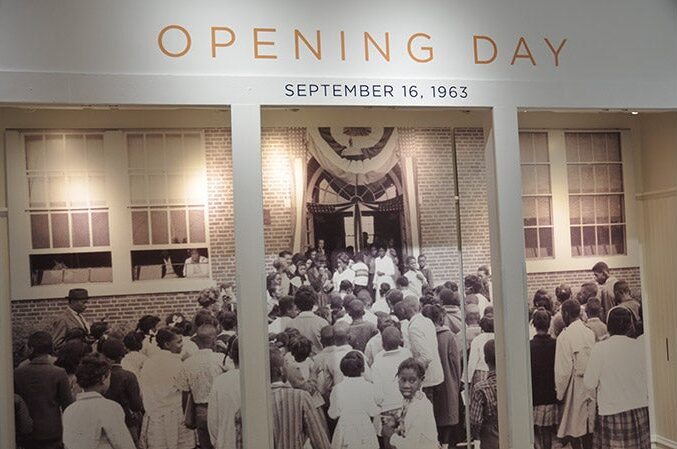Townsend: 70 years later, its critical we continue to build bridges
Published 12:01 am Saturday, May 11, 2024

- A crowd of students gathers on the day schools reopened after the Brown vs. Board of Education case in 1963.
|
Getting your Trinity Audio player ready...
|
May 17, 2024 is the 70th anniversary of the Brown v. Board of Education landmark United States Supreme Court decision. In that case the justices ruled unanimously that “In the field of public education the doctrine of ‘separate but equal’ has no place. Separate educational facilities are inherently unequal.” That decision changed the way public education operated in the United States.
The Brown v. Board of Education decision was actually composed of five test cases that were bundled by the Supreme Court. Briggs v. Elliot (Clarendon County, South Carolina), Beulah (Belton) v. Gebhart (Wilmington, Delaware), Bolling v. Sharpe (Washington, D.C.), Brown v. Board of Education (Topeka, Kansas), and Davis v. Prince Edward County (Farmville, VA).
Out of these five cases approximately 75% of the plaintiffs come from Virginia. Out of those five cases this was the only case that was initiated by students. Without the Davis case the history plays out in a much different way. We are so fortunate to stand on the shoulders of many of these giants in our community, but also walk alongside them.
An argument between two amendments
Trending
At its core Brown v. Board is an argument between two constitutional amendments. The 10th amendment and the 14th amendment. The states argued the 10th amendment or “The powers not delegated to the United States by the Constitution, nor prohibited by it to the States, are reserved to the States respectively, or to the people.” Essentially meaning education does not appear in the constitution so it falls under the interpretation of the 10th amendment. Thurgood Marshall and the NAACP argued the 14th amendment or “..nor shall any state deprive any person of life, liberty, or property, without due process of law; nor deny to any person within its jurisdiction the equal protection of the laws.”
In this case the court ruled that by virtue of having separate schools they are inherently unequal. There is a famous psychological study that was conducted by psychologists Drs. Kenneth & Mamie Clark. The “doll test” was a study conducted to show the psychological impacts of segregation on African American children. They were shown dolls of various skin complexion. They were tasked to assign traits to the dolls (beautiful, ugly, smart, dumb, kind, etc.). What they discovered was that the negative traits were being associated with the darker skinned dolls and the lighter skinned dolls were being associated with the positive traits. To end the study the children were asked to pick the doll that looked most like them. So the African American children would have to identify with a doll that they just assigned all the negative traits to.
Brown v. Board of Education decided that schools in the United States would desegregate, but the case did not give a timeline. The next year in 1955 you had the Brown II decision. Which said schools are to be desegregated “with all deliberate speed.” Virginia chose to react to Brown v. Board with a period of time known as Massive Resistance.
The legal system can’t build bridges
Massive Resistance brought forth many laws, policies, and precedents. One of the most dangerous precedents set by that era is closing down schools that tried to desegregate. The state closed down schools in Norfolk, Charlottesville, and Warren County. Arlington, VA almost had their schools closed as well. Thousands of Virginia students were impacted by these decisions and we still live in the shadow of that time period to this day.
Eventually the state fight against desegregated schools fails and 65 years ago on February 2, 1959, we did have the first desegregated schools in Virginia (five years after Brown). Upon losing the fight for Massive Resistance the state repealed its compulsory school attendance law meaning there was no truancy at that time. On June 2, 1959, the Prince Edward County Board of Supervisors voted to defund education in its entirety, closing over 20 schools in the county in the process until September of 1964.
It would take years of grassroots organizing, advocacy, protests, and a second US Supreme Court case out of Farmville in the span of 10 years. The Griffin v. Prince Edward County decision forces Prince Edward County to reopen public schools in the fall of 1964.
Trending
70 years later we continue to reflect on the legacy of Brown v. Board of Education. Thurgood Marshall said “The legal system can force open doors and sometimes even knock down walls, but it cannot build bridges. That job belongs to you and me.” As we continue to commemorate these anniversaries it is crucial we build bridges in our community and not barriers. There is still much work to be done, but we have a strong legacy of civil rights in education here in Prince Edward County.





